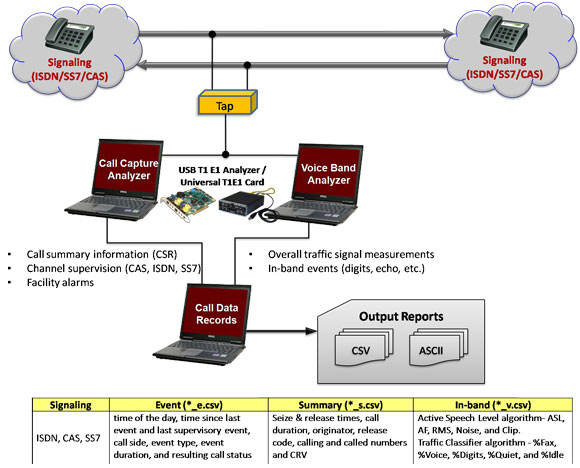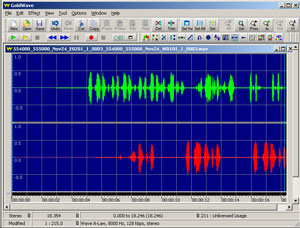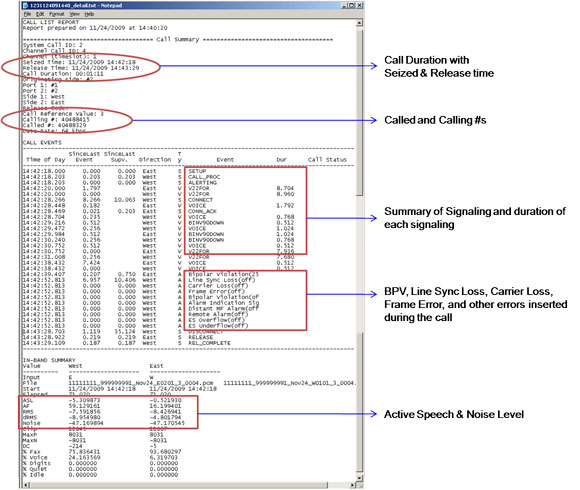Newsletter: GL Releases Ultimate Diagnostic Tool for Telecom Networks
Welcome to a November 2009 issue of GL's Newsletter. This week we highlight a new application - Call Data Records(CDR). CDR provides comprehensive information on each and every call occurring on T1 E1 lines, including,
- voice capture for both directions
- complete signaling information for each direction for CAS, ISDN, MFC-R2, SS7, and more
- all alarms and errors occurring during the call including BPV, Frame Errors, CRC errors, Loss Of Sync, and more
- detailed voiceband event information occurring during the call including dual tones (DTMF, MF, MFC-R2), fax tones, modem signals, and more
- detailed analysis of the voiceband call including noise level, speech level, speech activity factor, echo measurements, and more
- categorization of the call as voice, fax, modem, or data
Overview
The application works with CCA (Call Capture and Analysis) and VBA (Voice Band Analyzer) applications and generates the following two types of reports:
- Call Summary Report: contains a single summary line for each call with inbound and outbound ports, channel #, time of seizure & release, and other summary information.
- Call Detail Report: contains call summary data, as well as the progression of supervisory and in-band events during the call and an overall summary of in-band measures for each direction.
The Call Capture & Analysis (CC&A) application captures bidirectional voice traffic to files. Captures may be triggered by protocols such as signaling bits, ISDN or SS7 signaling. CCA also records signaling and alarm events, as well as producing a summary record for each call. Each CCA instance can monitor a single T1 or E1 trunk. Multiple CCA instances may be run concurrently to monitor multiple trunks.
The Voiceband Analyzer (VBA) application operates in near-real-time, processing the signal files recorded by CCA. VBA may be configured to detect in-band events such as sporadic acoustic echo, line echo, digit tones, in-band impairments, and the like. It also produces summary measurements of the captured signals, including active speech levels, noise level, percent time active, and DC offset. VBA records its output into two files, the first containing overall channel measurements, and the second containing event records.

Important features:
- Classifies the captured events from CCA into Call summary information (CSR), Channel supervision (CAS, ISDN, etc.), and Facility alarms results
- Classifies the captured events from VBA into In-band events (digits, echo, etc.) results and overall traffic signal measurements
- CDR can be configured to output its results to "comma-separated values" ("CSV") files or direct CSV file for loading into a database or spreadsheet
For comprehensive information on the application, please refer to
Call Data Records(CDR) web page.


 Back to Latest News Page
Back to Latest News Page